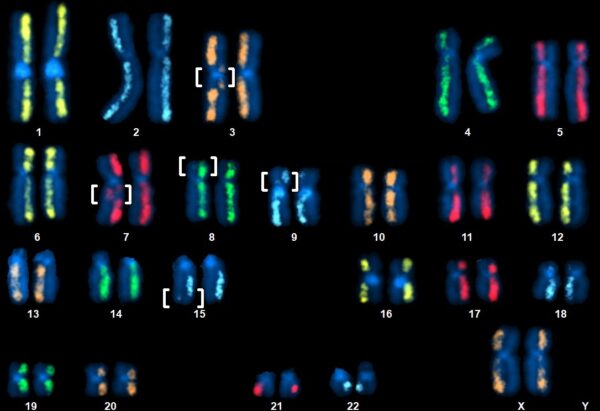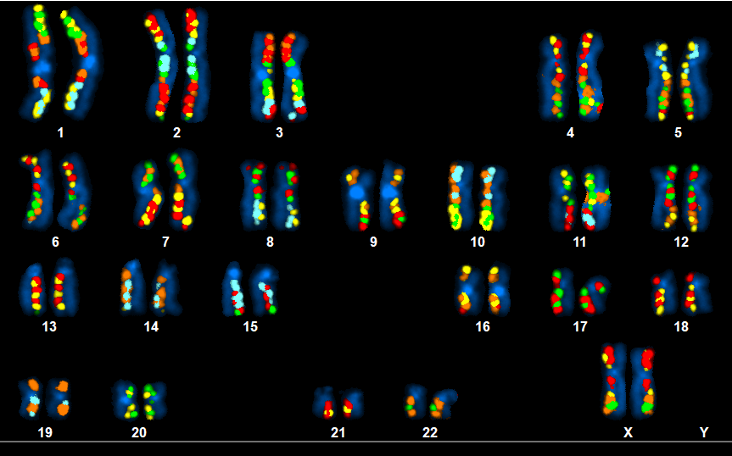Biomarker Discovery & Target Validation
Discover rare and undiagnosed disease biomarkers through targeted and unbiased assays.
Discover rare chromosomal structural variants using dGH assays.
Biomarker discovery and target validation are pivotal in advancing our understanding of diseases and developing effective treatments. The use of dGH SCREEN, dGH DSCVR, and dGH in-Site is the ultimate trifecta of assays representing cutting-edge technologies that empower researchers to uncover rare chromosomal variants unseen with other methods.
dGH™ is a unidirectional, in situ hybridization technique where single-stranded, fluorescently labeled DNA probes are hybridized to parental-strand only, metaphase spreads. This enables dGH to provide high-resolution identification and direct visualization of all manner of genomic structural variants including translocations, sister-chromatid exchanges, structural variations, rearrangements, and previously undetectable inversions.

Above Fig.: dGH SCREEN™ karyogram made from human lymphocyte with several rearrangements detected (brackets).
dGH SCREEN™: an Unbiased Assay for Discovery
DGH SCREEN uses our proprietary chromatid painting technology to map the single genomes and structural variants. A key application of dGH SCREEN is the discovery of constitutional structural variants such as small inversions that may initiate, drive or influence rare and undiagnosed diseases. This whole genome unbiased assay provides researchers with valuable insights into genomic structural variations that may play a role in disease development but are undetectable using screening methods such as NGS or metaphase FISH (see Figure).
With dGH SCREEN you can discover the hidden drivers of rare and undiagnosed genetic diseases or cancers.

Above Fig.: Human cell hybridized with whole-genome set of DSCVR bands with fluorescence relocation from one chromatid to the other indicating inversions in several chromosomes.
dGH DSCVR™: Target Chromosomes to Identify Genes within a Specific Region
dGH DSCVR™ uses our proprietary banding technology to more precisely target the location where an inversion occurs, enabling researchers to identify specific regions of genes with remarkable resolution, down to 3 kb. Using dGH DSCVR to identify breakpoints of a recurrent inversion facilitates development of targeted assays to track such variations. KromaTiD can then use this genomic information to create targeted probes for further analysis of cell or patient cohorts.

Above Fig.: Custom dGH in-Site probes and dGH paint hybridized to human immune cell. Both chromatids of one target chromosome (circled) bear green signal, indicating an inversion.
dGH in-Site: Custom Probe Design to Target Specific Inversions in Genes
dGH In-Site technology allows for the design of custom probes with exceptional resolution. Researchers can target specific genes and identify inversions as small as 2 kb with this innovative approach. Custom probes enhance the specificity of assays, ensuring accurate and reliable results. Probes can be created for targets in any species with a published genome. The ability to precisely target genes and identify small inversions contributes to a deeper understanding of the genetic basis of diseases, ultimately facilitating the development of targeted and personalized therapies.
Target Validation
Ultimately, the goal of these studies is to distinguish between harmless polymorphisms and drivers of disease. This often requires a multiomic approach including dGH structural variant data, plus analyses such as NGS, RNA-seq, dPCR and protein expression. KromaTiD scientists have years of experience in the area of study design and stand ready to work with you.

